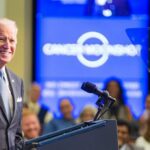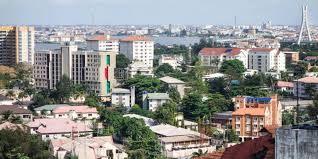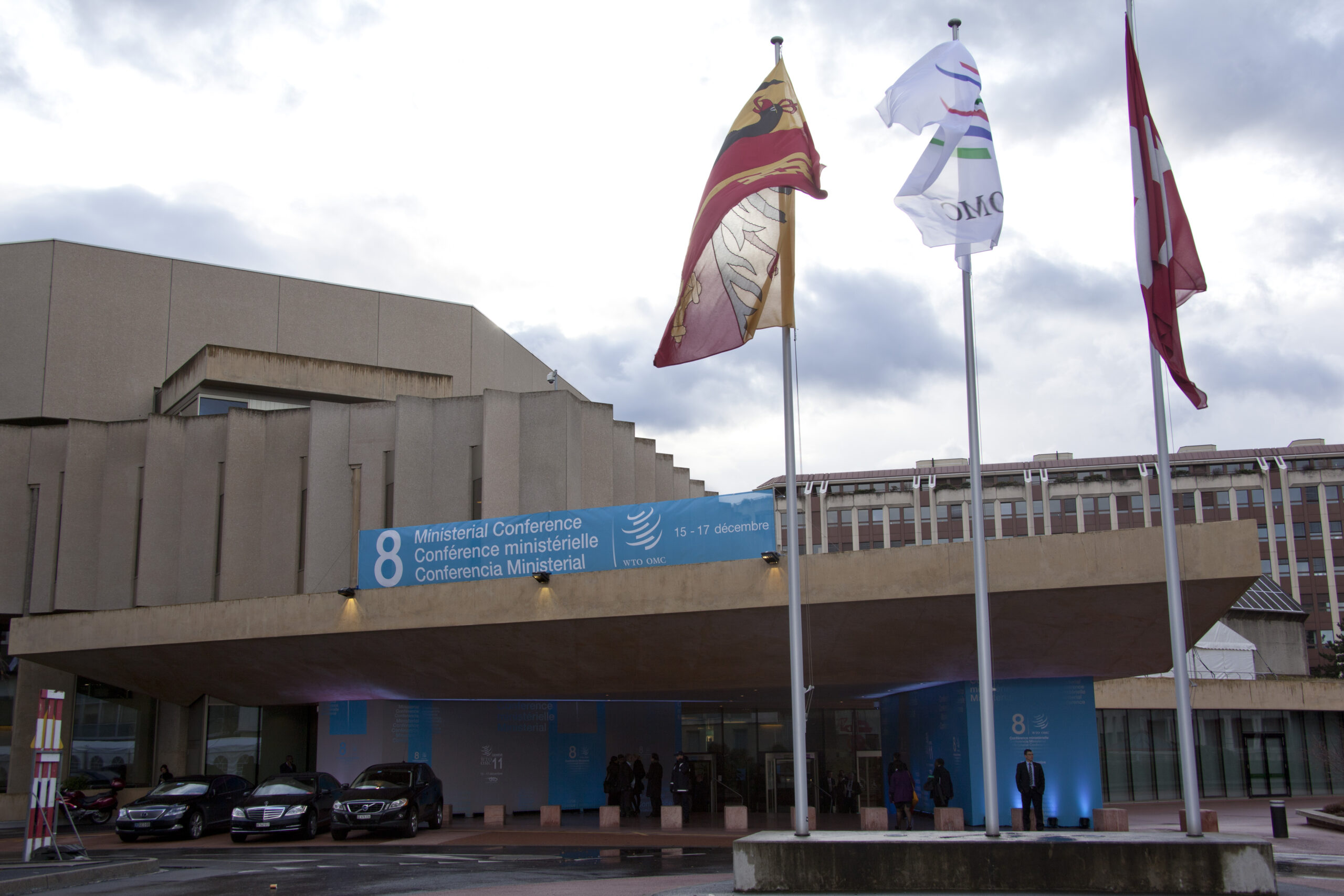Why the US Economy Grew at a Slower Pace Than Initially Thought in Q1

The first quarter of the year often sets the tone for the economic trajectory of the United States and so In Q1 of this year; initial expectations were high, buoyed by optimistic projections and a hopeful market outlook but the question is: why did the US Economy Grew at a Slower Pace than Initially Thought in Q1? The U.S. economy grew at a slower rate in the first quarter than originally reported, which mainly reflected weaker consumer spending on goods.
Data released by the Bureau of Economic Analysis showed that gross domestic product (GDP) grew at an annualized rate of 1.3% in the first three months of this year, lower than the previous estimate of 1.6%. The main growth engine of the economy-personal expenditure-increased by 2.0%, compared with the previous estimate of 2.5%.
Consumer spending was lowered because spending on goods—especially automobiles -was much softer. Federal government spending has slowed, while imports have picked up compared with the first estimate.
Net exports were subtracted from growth for the first time in two years.The decline in consumer spending was partially offset by strong commercial and residential investment.
A key indicator of potential domestic demand is that final sales to private domestic buyers increased by 2.8%, compared with the initially reported growth of 3.1%.
“Monthly data after March usually indicate that the economy continues to expand, although it has cooled modestly.
We expect GDP to continue to grow this year and healthy growth as a whole in 2024,” National financial market economist Oren Klachkin said in a note.
“Some warning signs about the economic outlook are visible under the surface, but nothing can make us pessimistic about the future path.”
However, as the quarter progressed, it became evident that the growth was not as robust as initially anticipated.
This article delves into the myriad factors contributing to this slower-than-expected economic growth, providing a comprehensive analysis of the key influences and their implications for the future.
Q1 Economic Growth Expectations
At the onset of Q1, economists and market analysts forecasted a period of substantial growth. The previous year had seen a remarkable recovery from the pandemic-induced recession, with significant government stimulus and pent-up consumer demand driving expansion.
The anticipation was that this momentum would carry forward into the new year, resulting in a continuation of robust economic activity.
Initial Projections and Optimism
The optimistic projections for Q1 were underpinned by several factors. Consumer confidence was high, buoyed by rising vaccination rates and a gradual return to normalcy.
Businesses were poised to ramp up production and investments, anticipating increased consumer spending.
The stock market reflected this optimism, with major indices reaching new highs. Economists predicted that GDP growth would accelerate, possibly surpassing the impressive gains of the previous quarters.
Revised Growth Figures
As Q1 progressed, the initial exuberance gave way to a more tempered reality. Revised growth figures indicated a slower pace of economic expansion than expected.
The U.S. Commerce Department reported that GDP grew at an annualized rate of 1.1%, significantly lower than the 2.4% forecasted. This revision prompted a closer examination of the underlying factors that contributed to the slower growth.
Key Factors Behind the Slower Growth
Several key factors emerged as significant contributors to the slower economic growth in Q1. These included weakened consumer spending, reduced business investments, supply chain disruptions, and broader global economic challenges. Each of these elements played a crucial role in tempering the anticipated economic expansion.
Impact of Consumer Spending
Consumer spending is a critical driver of economic growth, accounting for nearly 70% of GDP. In Q1, consumer spending did not reach the expected levels.
This decline was influenced by a combination of factors, including reduced retail sales and shifts in consumer behavior.
Reduced Retail Sales and Its Consequences
Retail sales, a key indicator of consumer spending, showed signs of weakening. The holiday season, which typically boosts Q1 figures, saw lower-than-expected sales.
Factors such as rising prices and concerns about inflation led consumers to tighten their belts. This decline in retail activity had a ripple effect across the economy, dampening overall growth.
Shifts in Consumer Behavior
Consumer behavior shifted notably in Q1. While there was a pent-up demand for goods and services post-pandemic, inflationary pressures and economic uncertainty led to more cautious spending.
Consumers began prioritizing essentials and saving more, reducing discretionary spending. This behavioral shift contributed to the overall slowdown in economic activity.
Business Investments and Industrial Output
Business investments, particularly in capital expenditures and industrial output, also saw a decline. This reduction in investment had significant implications for economic growth, affecting production levels and overall business confidence.
Decline in Capital Expenditures
Capital expenditures, which include investments in equipment, technology, and infrastructure, are vital for long-term economic growth.
In Q1, businesses scaled back these investments due to uncertainties surrounding supply chains and inflation. This decline in capital expenditures slowed down industrial output and reduced overall economic momentum.
Manufacturing Sector Slowdown
The manufacturing sector, a key component of industrial output, experienced a notable slowdown. Supply chain disruptions, rising input costs, and labor shortages hindered production.
As a result, the manufacturing output did not contribute as significantly to GDP growth as anticipated.
Supply Chain Disruptions
Supply chain disruptions continued to be a significant impediment to economic growth in Q1. These disruptions affected production and distribution across various industries, leading to delays and increased costs.
Impact on Production and Distribution
The disruptions in supply chains had a cascading effect on production and distribution. Manufacturers faced delays in receiving raw materials and components, leading to production bottlenecks.
Distribution networks were also strained, impacting the timely delivery of goods to consumers and businesses alike.
Global Supply Chain Challenges
The global nature of supply chains meant that disruptions were not limited to the U.S. alone. International challenges, including port congestion and geopolitical tensions, further exacerbated supply chain issues. These global challenges had a direct impact on domestic production and economic growth.
International Trade and Export Issues
International trade and export dynamics also played a role in the slower economic growth of Q1. Trade wars, tariffs, and global market volatility influenced the U.S. economy’s ability to expand as anticipated.
Trade Wars and Tariff Impacts
Ongoing trade disputes and the imposition of tariffs created uncertainties for exporters and importers.
These trade tensions led to increased costs for businesses and disrupted global supply chains, contributing to slower economic growth.
Global Market Volatility
Volatility in global markets, driven by geopolitical tensions and economic uncertainties, affected investor confidence and trade dynamics. This volatility impacted U.S. exports, as demand from key international markets fluctuated.
Inflation and Its Role
Inflation emerged as a critical factor influencing the U.S. economy in Q1. Rising prices affected both consumer spending and business investment, leading to slower economic growth.
Rising Prices and Consumer Impact
Consumers faced higher prices for goods and services, which eroded their purchasing power. This inflationary pressure led to reduced spending on non-essential items, affecting overall economic activity.
Energy and Commodity Price Fluctuations
Energy and commodity prices saw significant fluctuations in Q1. Rising oil prices, in particular, increased costs for transportation and manufacturing, contributing to higher inflation and impacting economic growth.
Labor Market Dynamics
The labor market experienced significant shifts in Q1, with changes in unemployment rates, job creation, and labor shortages influencing the pace of economic growth.
Unemployment Rates and Job Creation
While unemployment rates declined, job creation did not keep pace with expectations. The labor market faced mismatches between available jobs and worker skills, leading to slower economic expansion.
Labor Shortages and Wage Pressures
Labor shortages in key industries led to increased wage pressures as businesses competed for a limited pool of workers. These wage increases, while beneficial for workers, added to inflationary pressures and impacted profit margins.
Federal Reserve Policies
Federal Reserve policies, particularly regarding interest rates and monetary measures, played a pivotal role in shaping the economic landscape of Q1.
Interest Rate Adjustments
The Federal Reserve’s decisions on interest rates aimed to balance economic growth with inflation control. However, these adjustments influenced borrowing costs and investment decisions, affecting overall economic activity.
Monetary Policy Implications
Monetary policies, including asset purchases and liquidity provisions, were designed to support economic growth. The effectiveness of these measures in Q1 was mixed, with some sectors benefiting more than others.
Government Fiscal Policies
Government fiscal policies, including stimulus measures and budgetary decisions, had significant implications for economic growth in Q1.
Impact of Stimulus Measures
Previous stimulus measures had boosted economic activity, but their effects began to wane in Q1. The absence of new, substantial fiscal support contributed to the slower growth.
Federal Budget and Spending Cuts
Federal budget constraints and spending cuts in certain areas affected public sector contributions to GDP. Reduced government spending in infrastructure and social programs impacted overall economic momentum.
Housing Market Trends
The housing market, a critical component of the economy, experienced notable trends that influenced Q1 growth.
Housing Affordability Issues
Housing affordability became a significant concern as prices continued to rise. This issue affected homebuyers and slowed down the housing market’s contribution to economic growth.
Slower Construction Activity
Construction activity slowed down in Q1 due to rising material costs and labor shortages. This slowdown impacted the broader economy, given the housing market’s interconnectedness with various sectors.
Sector-Specific Analysis
A closer look at specific sectors provides additional insights into the factors affecting Q1 economic growth.
Tech Sector Performance
The tech sector, which had driven much of the previous year’s growth, saw mixed performance. Supply chain issues and regulatory concerns tempered its expansion.
Healthcare and Pharmaceutical Trends
The healthcare and pharmaceutical sectors continued to be pivotal but faced challenges such as regulatory changes and supply chain disruptions, affecting their growth trajectories.
Impact of Geopolitical Events
Geopolitical events, including international conflicts and regulatory changes, influenced the U.S. economy’s performance in Q1.
International Conflicts and Economic Stability
International conflicts, such as tensions in Eastern Europe and trade disputes with China, created economic uncertainties that affected market stability and growth.
Conclusion
The first quarter’s slower economic growth underscores the complexity of the current economic landscape. Multiple factors, from consumer behavior to global trade dynamics, played a role in tempering growth expectations.
Understanding these influences is essential for developing strategies to foster a more robust and resilient economy in the future.
Q1 economic growth was slower than initially anticipated due to weakened consumer spending, reduced business investments, supply chain disruptions, and inflationary pressures.
These factors, along with labor market dynamics and geopolitical events, created a challenging economic environment.
To navigate these challenges, policymakers and businesses must focus on addressing supply chain issues, stabilizing inflation, and investing in long-term growth strategies.
Enhancing workforce skills, supporting innovation, and maintaining flexible fiscal and monetary policies will be crucial in fostering sustained economic resilience and growth.









